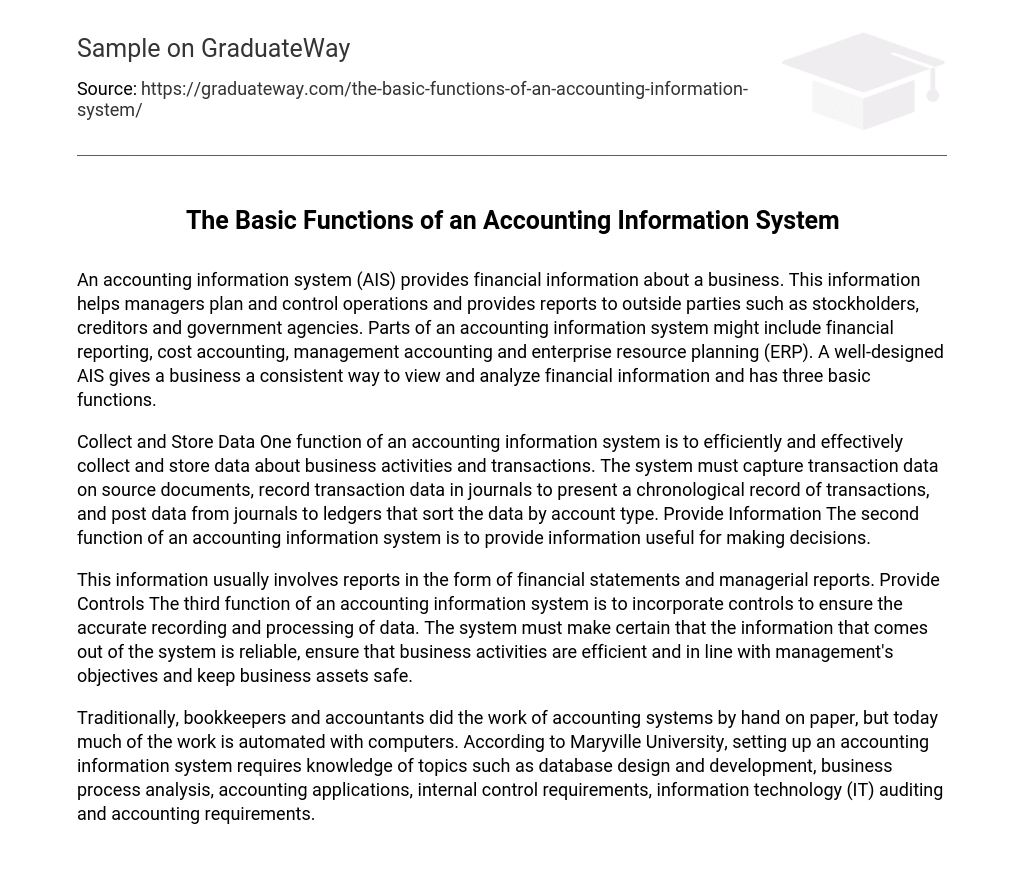An accounting information system (AIS) provides financial information about a business. This information helps managers plan and control operations and provides reports to outside parties such as stockholders, creditors and government agencies. Parts of an accounting information system might include financial reporting, cost accounting, management accounting and enterprise resource planning (ERP). A well-designed AIS gives a business a consistent way to view and analyze financial information and has three basic functions.
Collect and Store Data One function of an accounting information system is to efficiently and effectively collect and store data about business activities and transactions. The system must capture transaction data on source documents, record transaction data in journals to present a chronological record of transactions, and post data from journals to ledgers that sort the data by account type. Provide Information The second function of an accounting information system is to provide information useful for making decisions.
This information usually involves reports in the form of financial statements and managerial reports. Provide Controls The third function of an accounting information system is to incorporate controls to ensure the accurate recording and processing of data. The system must make certain that the information that comes out of the system is reliable, ensure that business activities are efficient and in line with management’s objectives and keep business assets safe.
Traditionally, bookkeepers and accountants did the work of accounting systems by hand on paper, but today much of the work is automated with computers. According to Maryville University, setting up an accounting information system requires knowledge of topics such as database design and development, business process analysis, accounting applications, internal control requirements, information technology (IT) auditing and accounting requirements.





